Bode Rec x Nike: An Exclusive Inside Look at the Making of the Next “It” Sneaker
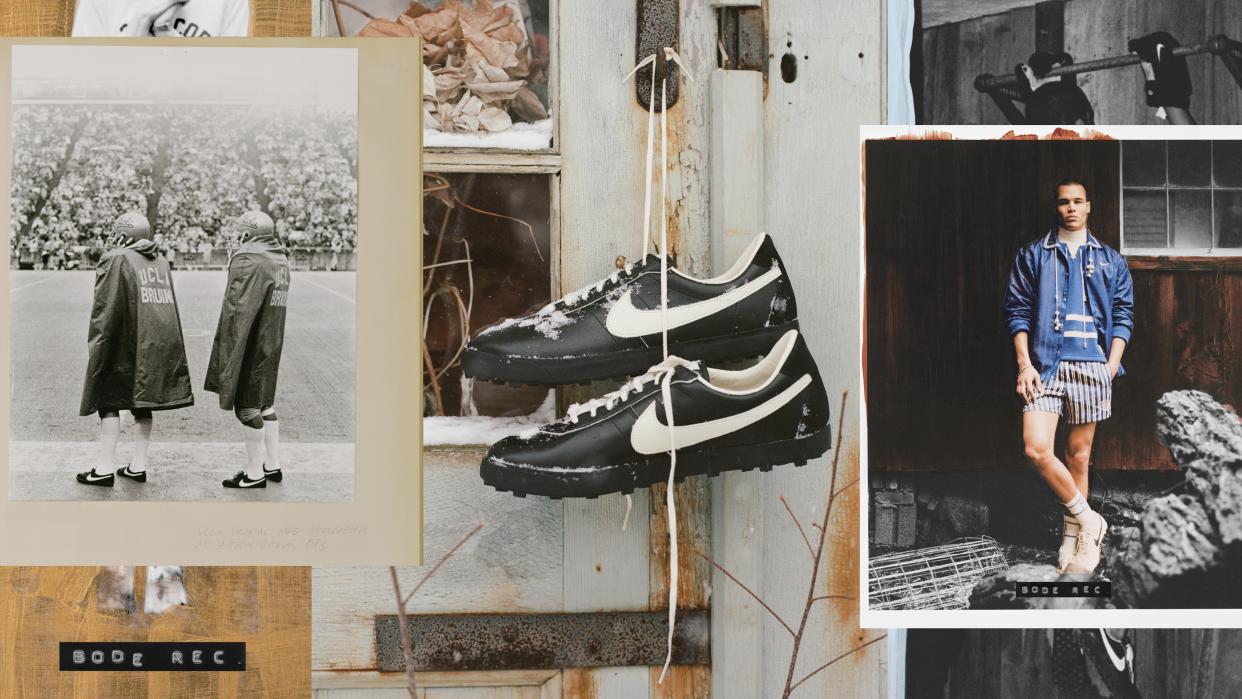
Photographs courtesy of Bode
Before Emily Adams Bode Aujla unearthed it from the Nike archives, not many people knew about the Astro Grabber, a simple cleat that the Swoosh put on football players in the company’s bootstrapping early days. Jeff Johnson, however, remembers it fondly. Johnson, Nike’s very-first full-time employee, recalls the Astro Grabber hitting his desk around early 1972. “That one, it was just such a sexy looking shoe,” he says.
Now, the Nike Astro Grabber is getting a second act as the most-anticipated sneaker of the moment, as part of the long-awaited collaboration between Bode and Nike. The collection, which hits stores starting on April 18, features two reinvented versions of the shoes that Vogue declares are “bound to be the next ‘It’ sneakers.” The footwear will be released alongside a small range of collegiate clothing under Bode Rec., a new line inspired by the history of American athleticwear.
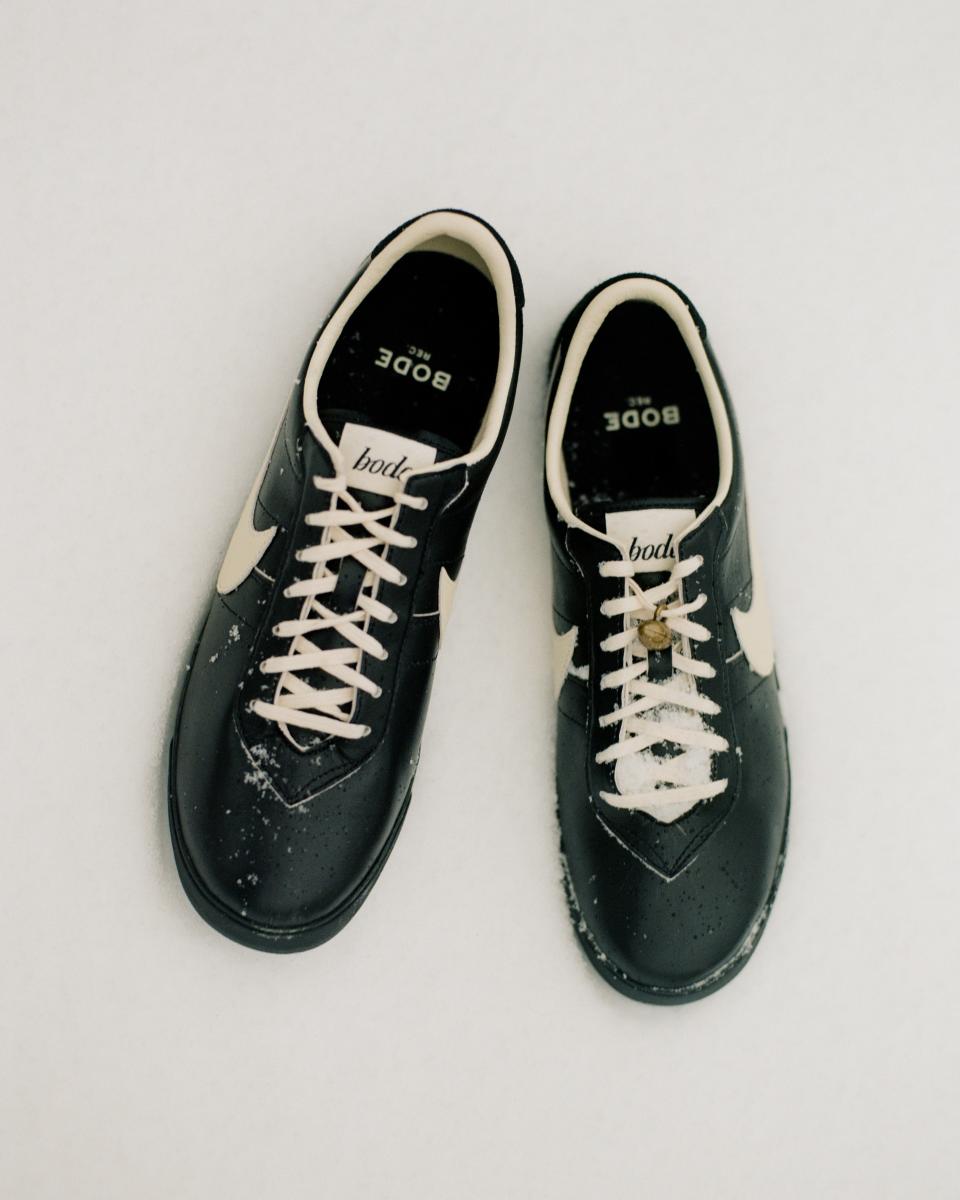
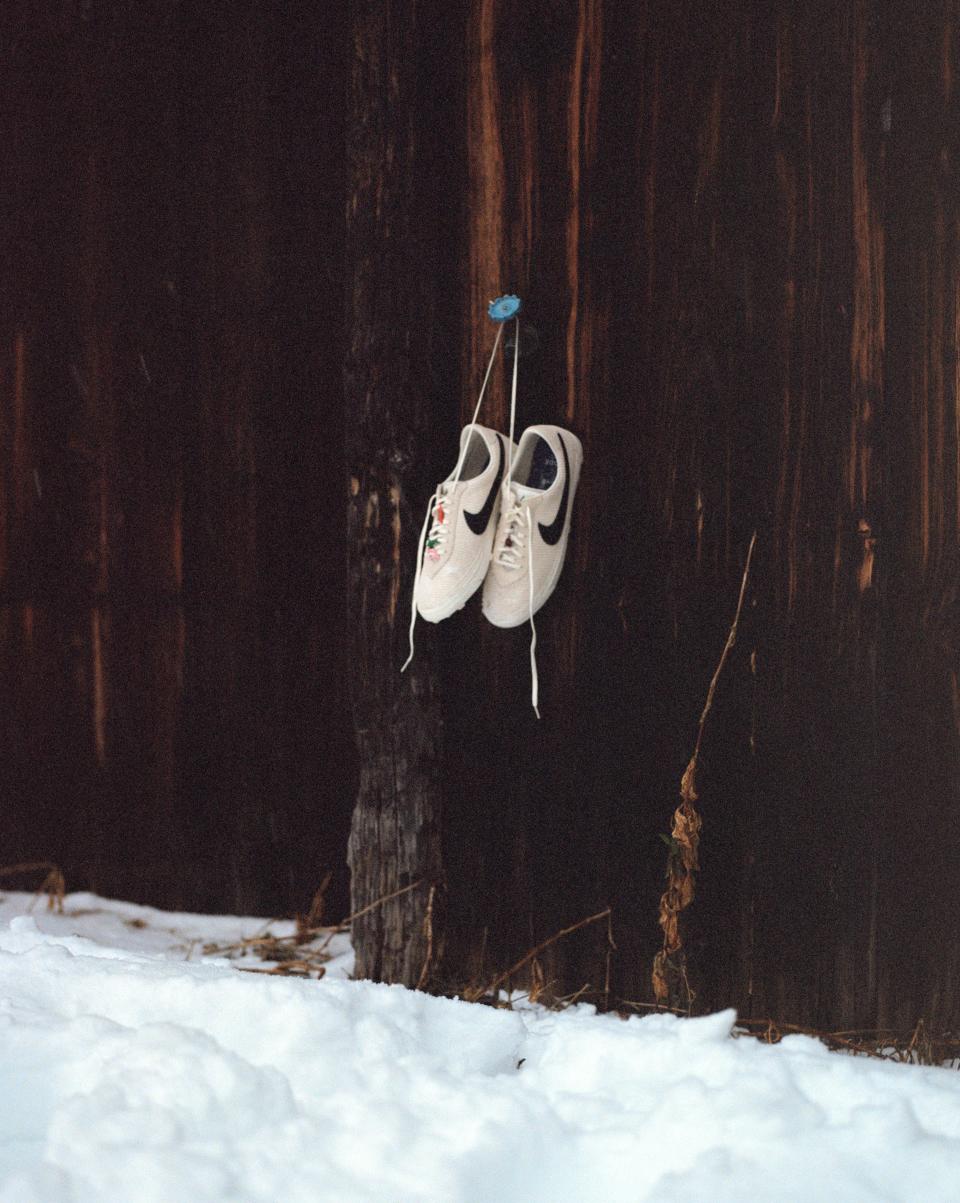
As Bode’s first major collaboration, the launch marks an important moment in the establishment of the next-gen luxury brand. And in typical Bode fashion, the project involves quite a bit of storytelling. Which is where Johnson—one of the most fascinating characters in the chronicle of American footwear, the man who literally coined the name “Nike”—comes in.
As the hype around the sneakers was hitting a boiling point, I got on a video call for a rare interview with Johnson from his home in New Hampshire, where he’s been living since he retired in 1983. (He probably missed getting cast in Ben Affleck’s “Air,” in other words, by about a year.) I quickly realized why Bode Aujla asked Nike if she could meet with him as she began designing the collaboration. Johnson’s running days are behind him, but he’s as sharp as a track spike, and doesn’t take much encouragement to unspool lengthy yarns about the quixotic origins of Nike, where he’s still fondly referred to as “Employee Number One.”
“Making running shoes for your friends and for yourself and selling them at a good value and a good price, that's not a real job. That is just fun, fun, fun, fun, fun!” he recalled. Johnson, a former Stanford runner, was Phil Knight’s first full-time hire in 1965. If Knight was the brains of the operation that became Nike, Johnson was the heart, bringing a level of obsession to the idea of marketing and selling sneakers that carried the fledgling company through countless rough patches. “I was the only guy” at the beginning, Johnson told me. “So I was sweeping the floors, going to the docks to get the shoes, marketing, everything all by myself.” He was occasionally visionary. In 1971, Knight was in desperate need of a moniker before their first batch of original shoes left the factory. “Nike” came to Johnson in a dream at the eleventh hour, and the rest was history.
Johnson is exceedingly humble about the whole thing. “We were just having a lot of fun, working hard, and didn't know any better,” he told me.
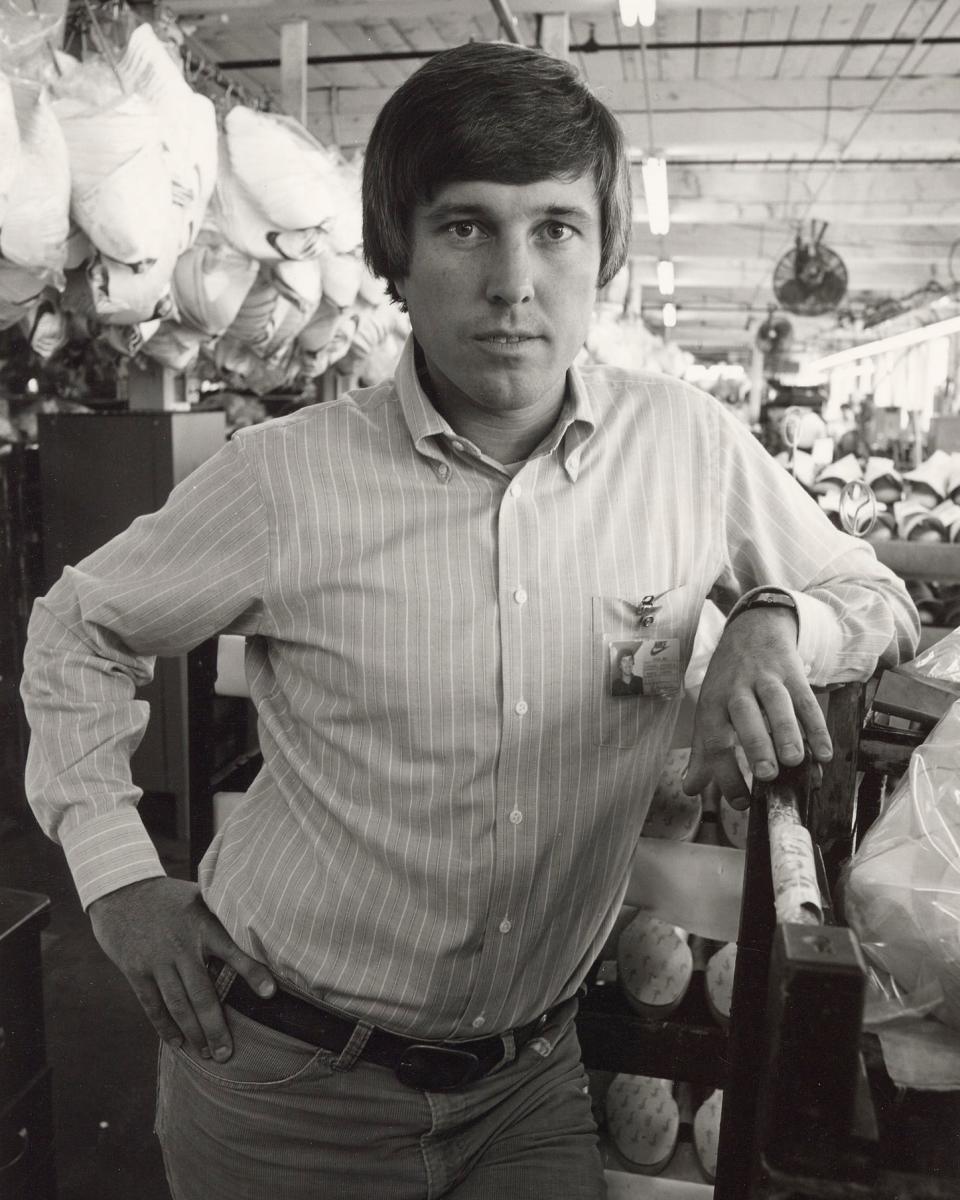
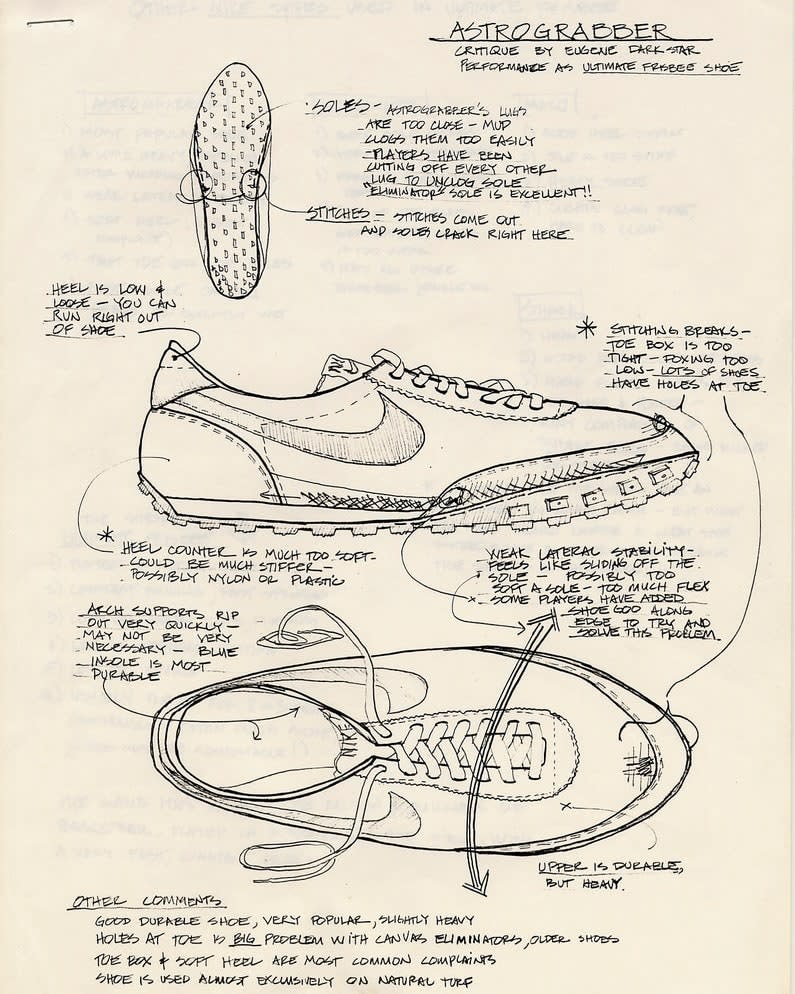
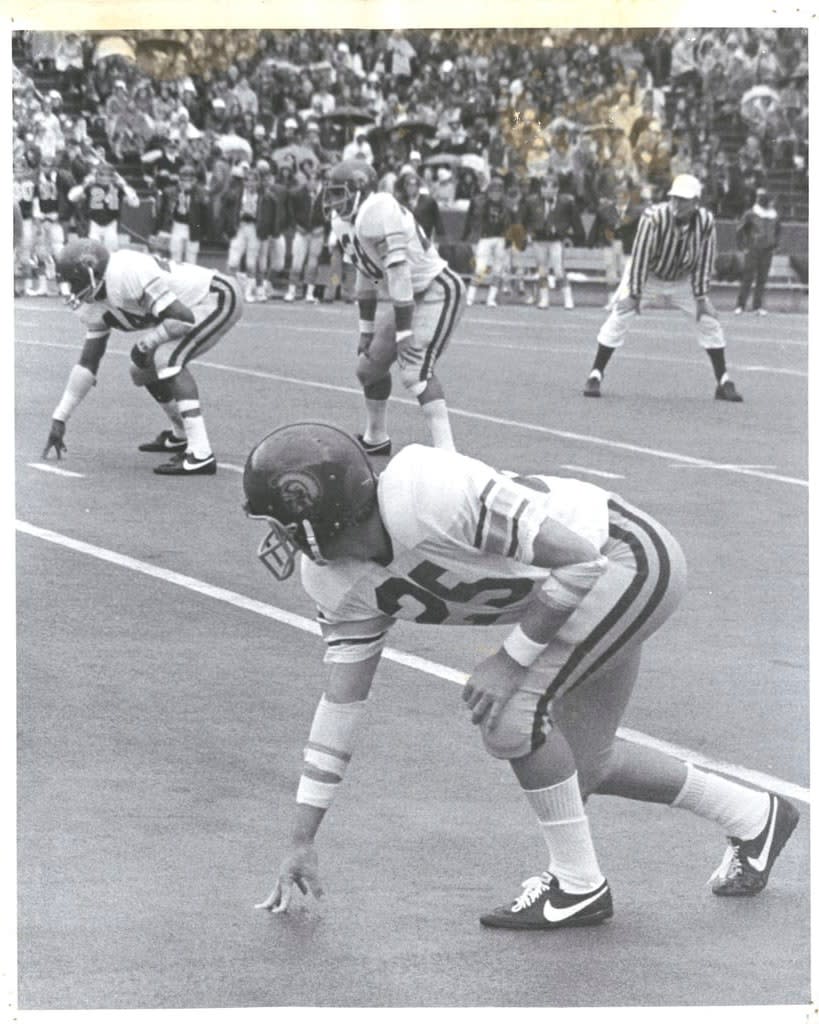
It was this founding spirit that drew Bode Aujla to Nike in the first place. Since reading Knight’s memoir Shoe Dog in 2016—and reading it again many times after—the designer had been inspired by the early employees’ near-mythic hustle, ingenuity, and strong sense of community. “It’s the story of these guys that were doing what they were so passionate about, the idea of working for something that was so natural to them,” she told me. Though she began getting calls from global athletic brands interested in collaborating back in 2017, just a year after she began selling one-of-a-kind quilted garments out of her Lower East Side apartment, Emily knew she wanted to hold out for Nike.
“I was never that interested in doing collaborations for the sake of doing a collaboration,” she said. The very fact that guys like Johnson are still around made all the difference. Her work tenderly reinterprets craft traditions and material culture, and her design process typically involves extensive historical research and hours of interviews that help her incorporate intriguing, long-forgotten references and traditions into her clothing. “That was a huge component, being able to meet some of the original guys and get that story,” she said. “It’s an American story. These were guys who out of college were super passionate and believed in creating the best product and grew this thing organically from zero.”
On her first visit to the brand’s Beaverton headquarters, she asked to see Nike co-founder Bill Bowerman’s basement workshop in Eugene, which has been basically preserved as it was when he was tinkering with his wife’s waffle iron to develop Nike’s revolutionary waffle sole. “It's not on their normal Welcome To Nike tour,” Bode Aujla said with a laugh.
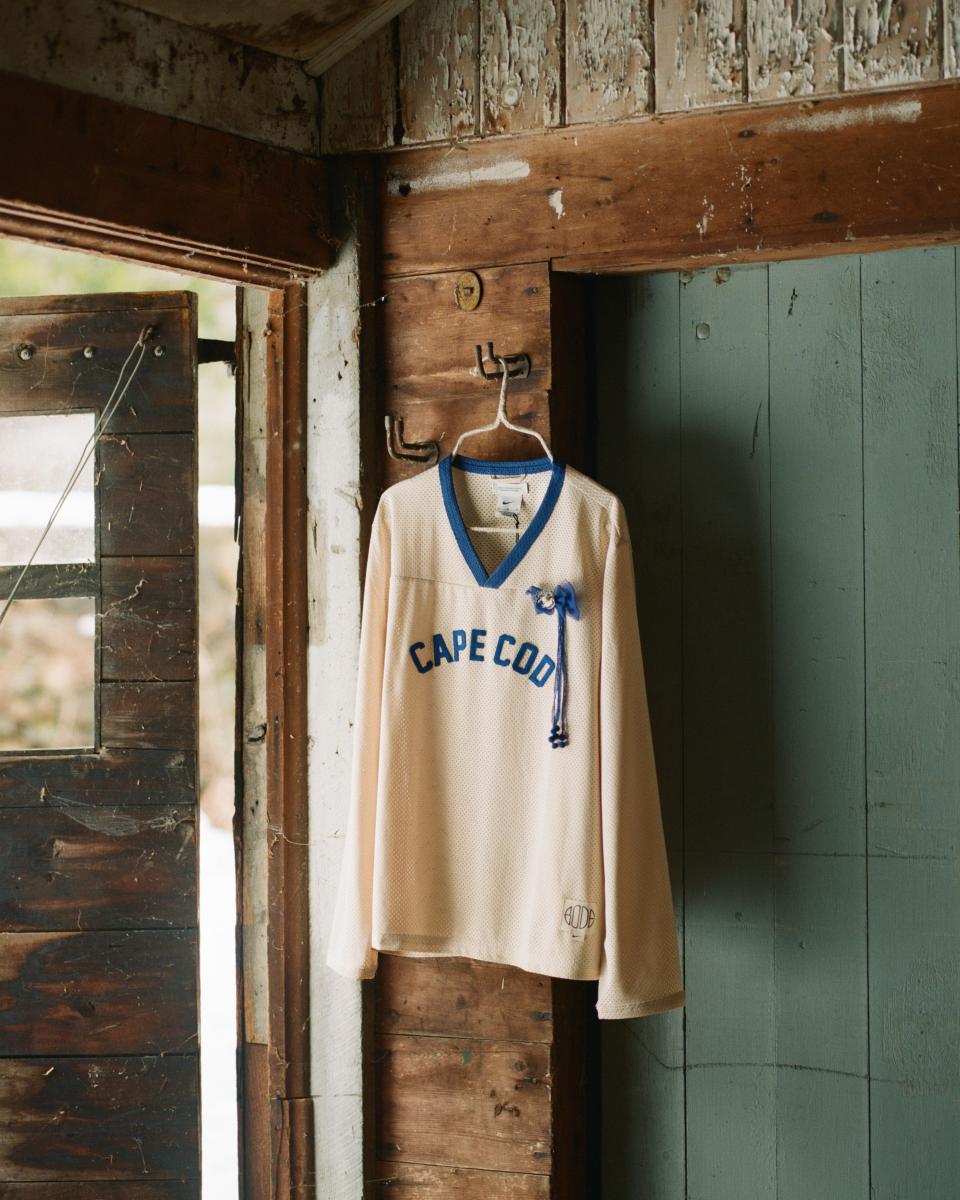
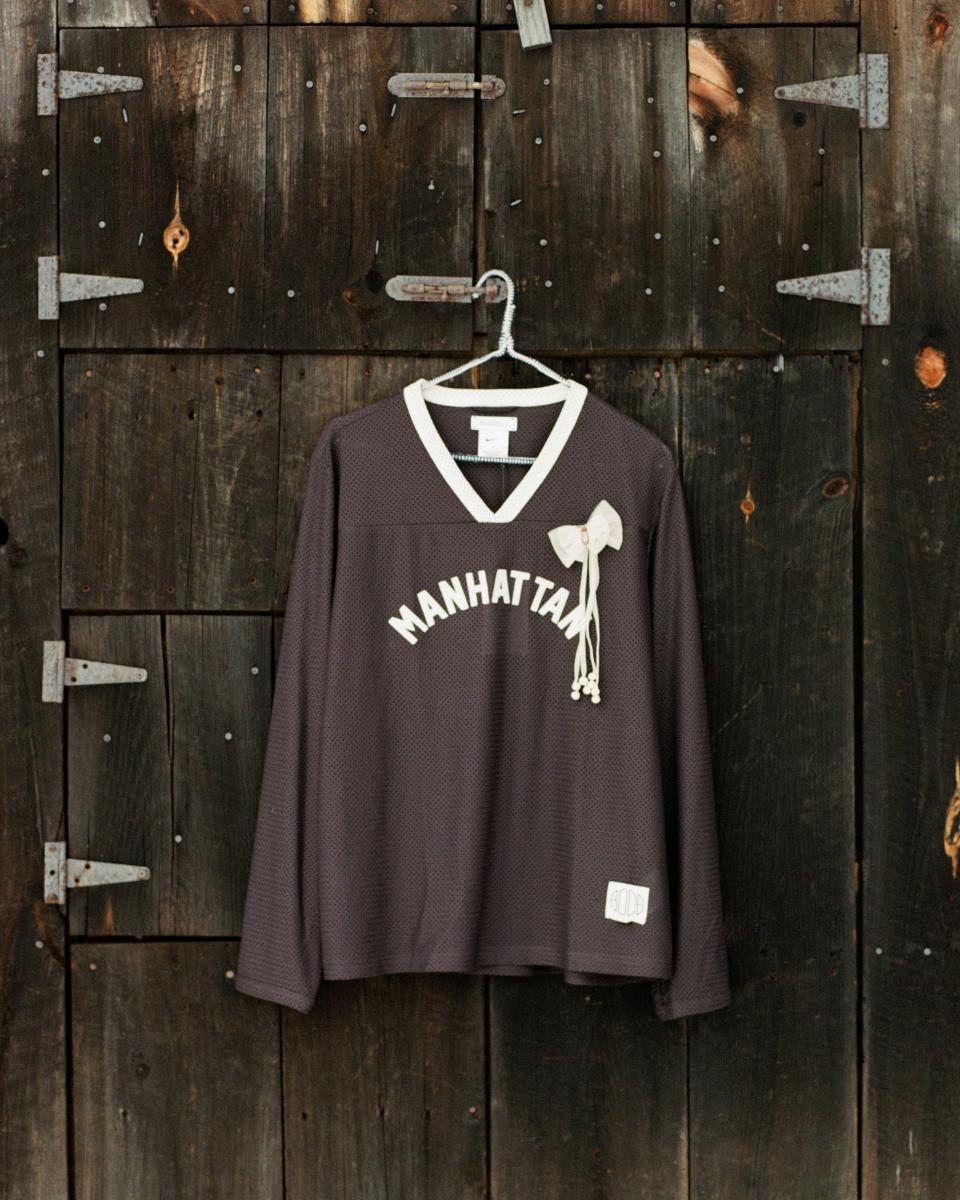
All throughout, Johnson played the role of unofficial muse for the collection. When Bode Aujla visited him in New Hampshire, he regaled her with tales of the first Nike to hit the cover of Sports Illustrated—it was an Astro Grabber, on the feet of USC star Anthony Davis. It was around then, too, that Bode Aujla’s father was a high school football captain. Family is core to the Bode brand ethos, and Bode Aujla wove her personal history throughout the collection. The campaign features a photo from 1971 of pops in full gridiron garb, and the sneakers come with a removable brass football charm that resembles one Bode Aujla has worn on a bracelet for years.
Those who know the designer know that it’s somewhat ironic that she designed a sneaker at all. “I don’t actually wear sneakers!” she said. But in the Grabber, she found a perfectly obscure historical footnote of the kind she’s deeply compelled by. The sneaker embodied Nike’s early successes—and failures. “It was probably a dangerous shoe,” Johnson said. Shod with one of Bowerman’s early waffle soles, the shoe was thin and flexible, which increased mobility but left athletes vulnerable to turf toe. “But you could cut a dime in the Astro Grabber,” he said, “so the players sure liked it.” To turn it into a silhouette that style heroes such as Kaia Gerber would also go crazy for, Bode Aujla tweaked the shape and sole so that it would look easy and timeless. “Like I always say about Bode, I wanted to create something where you could take a picture of it and not really know when it’s from,” she said.
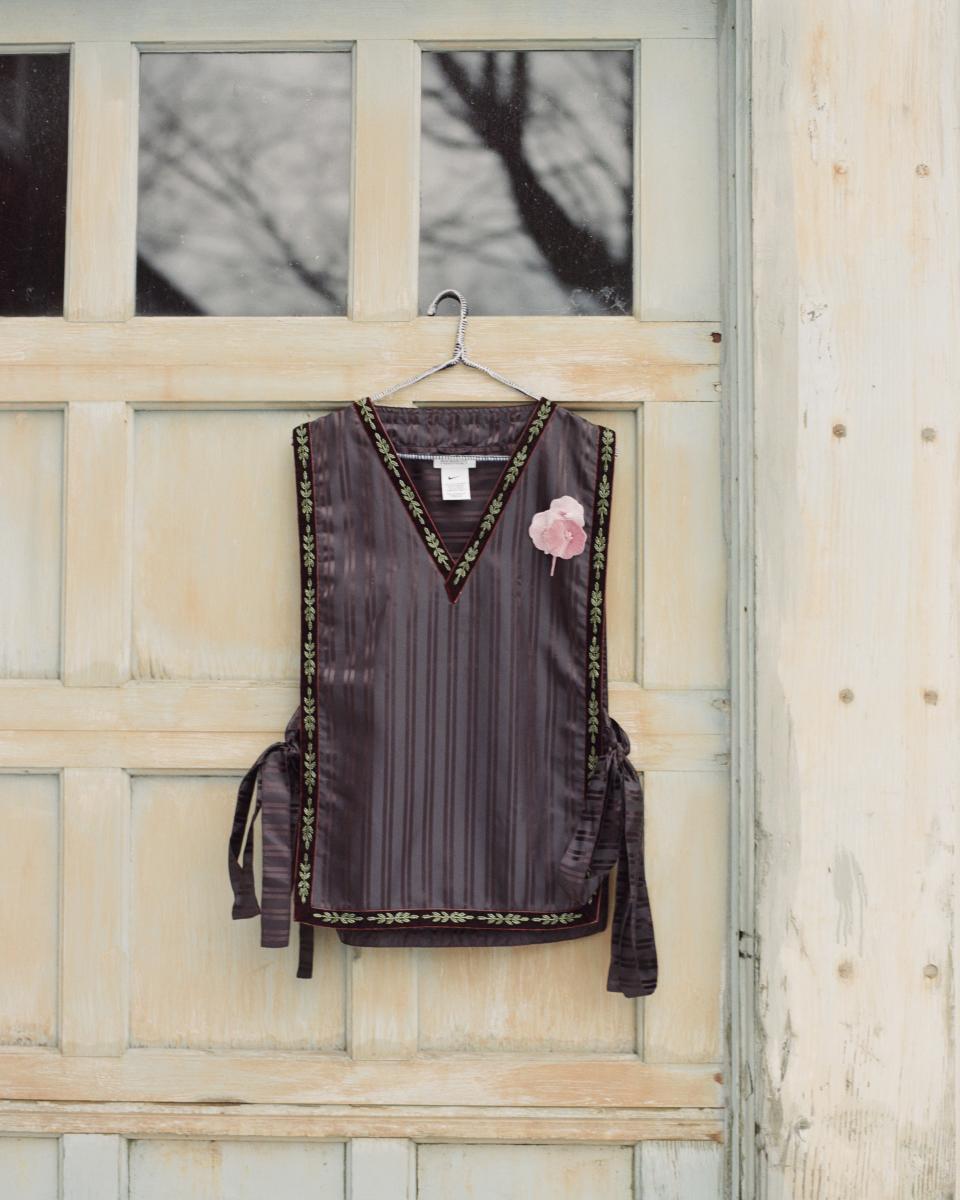
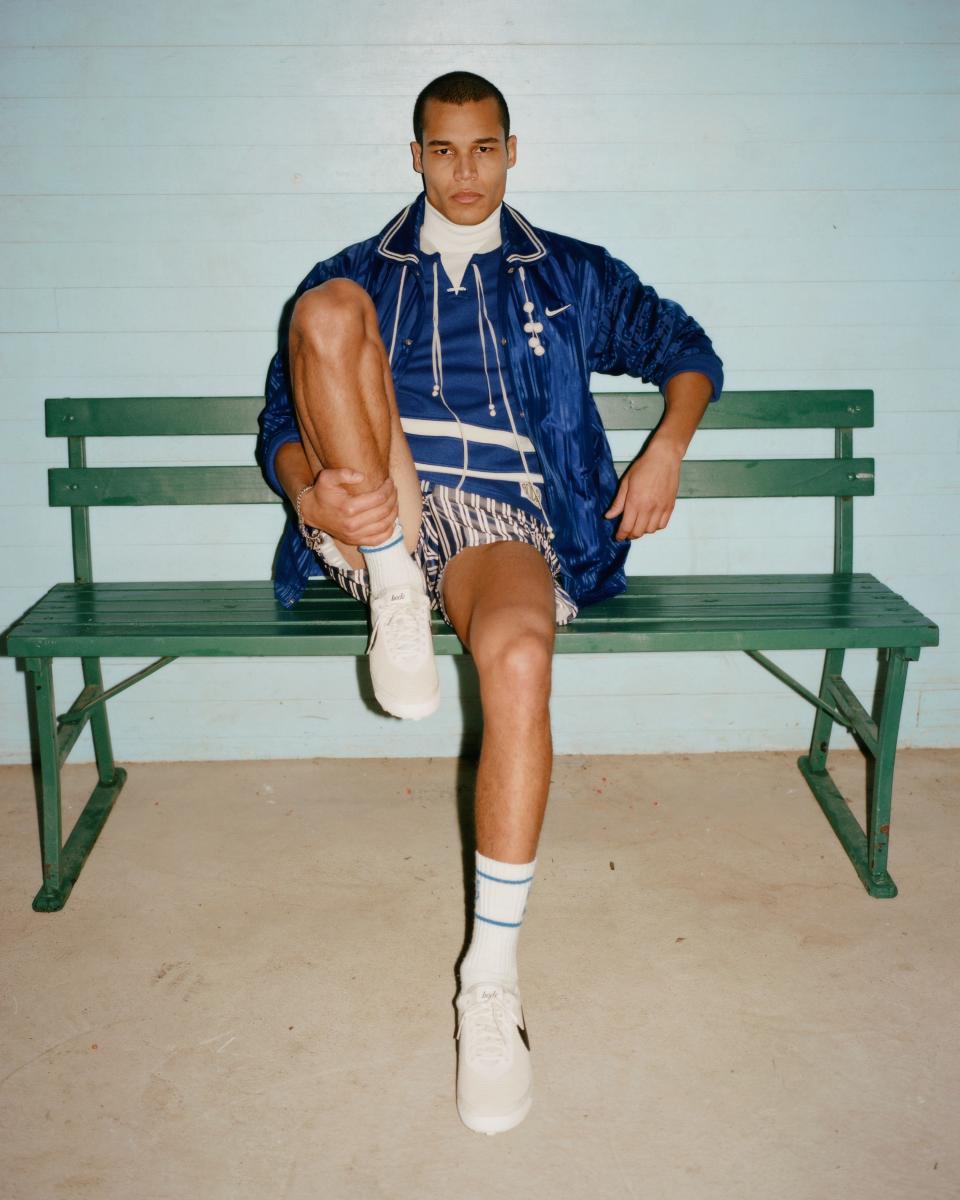
Bode Aujla also used the opportunity to explore larger narratives around athletics. Bode Rec. grew out of the designer’s abiding interest in “the importance of sports in American society, the idea of character building and of becoming a more virtuous person,” she said. (Which, not coincidentally, is exactly how Knight and Johnson think of running.) The apparel—comprised of hockey sweaters, cross country pinnies, football jerseys, coaches jackets, short-shorts, and thermal baselayers—was designed around the idea of two semi-fictional teams who took part in a 1756 boat race. One crew was from Cape Cod, the other from Manhattan. “How do you even conceive of recreational clothing,” Bode Aujla asked herself, “before institutional sport?”
One of her answers was to incorporate hand-beading on the track pants, which Bode Aujla described as “unheard of” for Nike. The thermals, meanwhile, harken back to Bowerman’s days coaching the Oregon track team before the advent of modern athletic apparel. “In the Department of Nike Archives, I heard a story about Bill Bowerman’s student athletes and the neighbors were calling and complaining that the students were running around in their thermals—in their underwear!” Bode Aujla said with a laugh. Bowerman responded by dyeing his team’s underwear green.
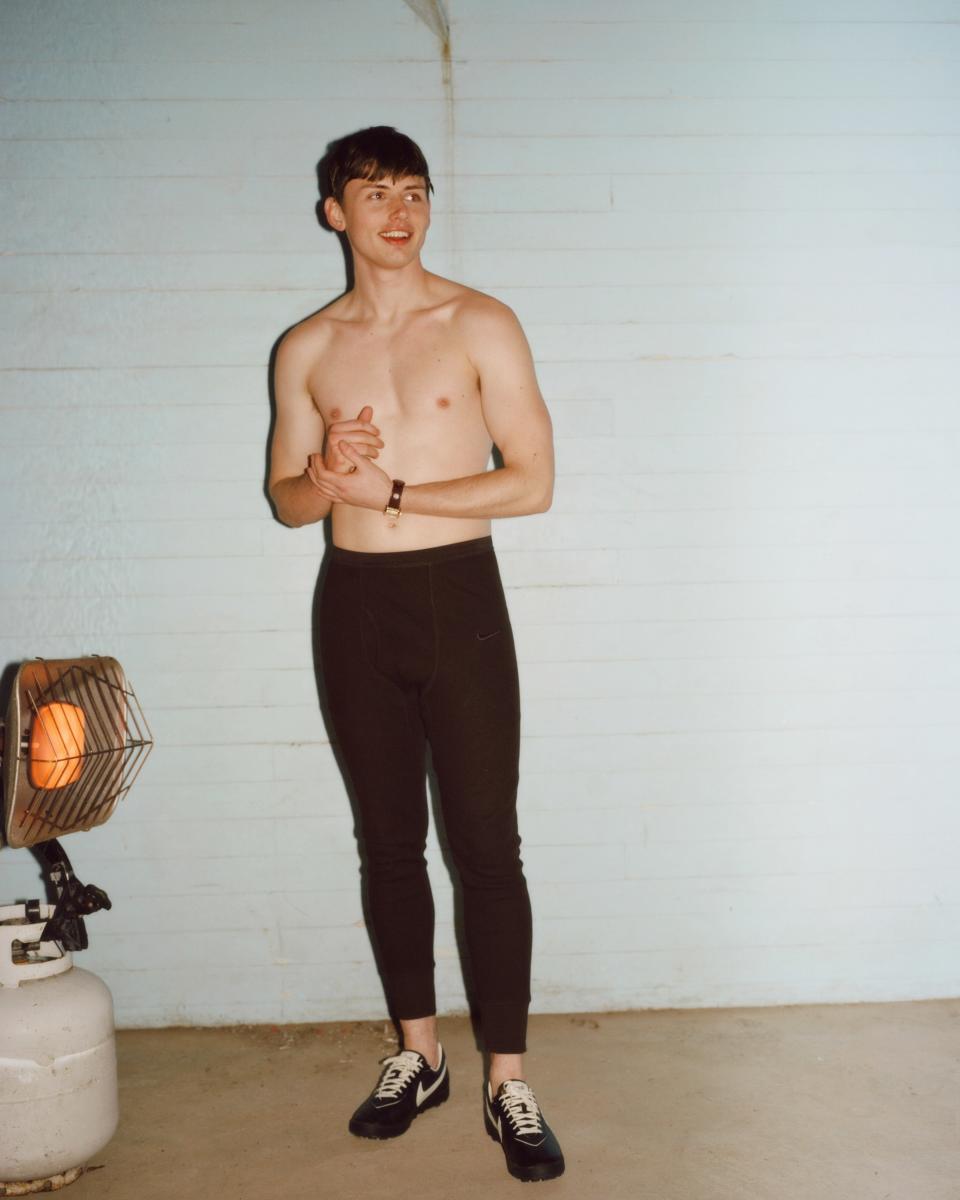
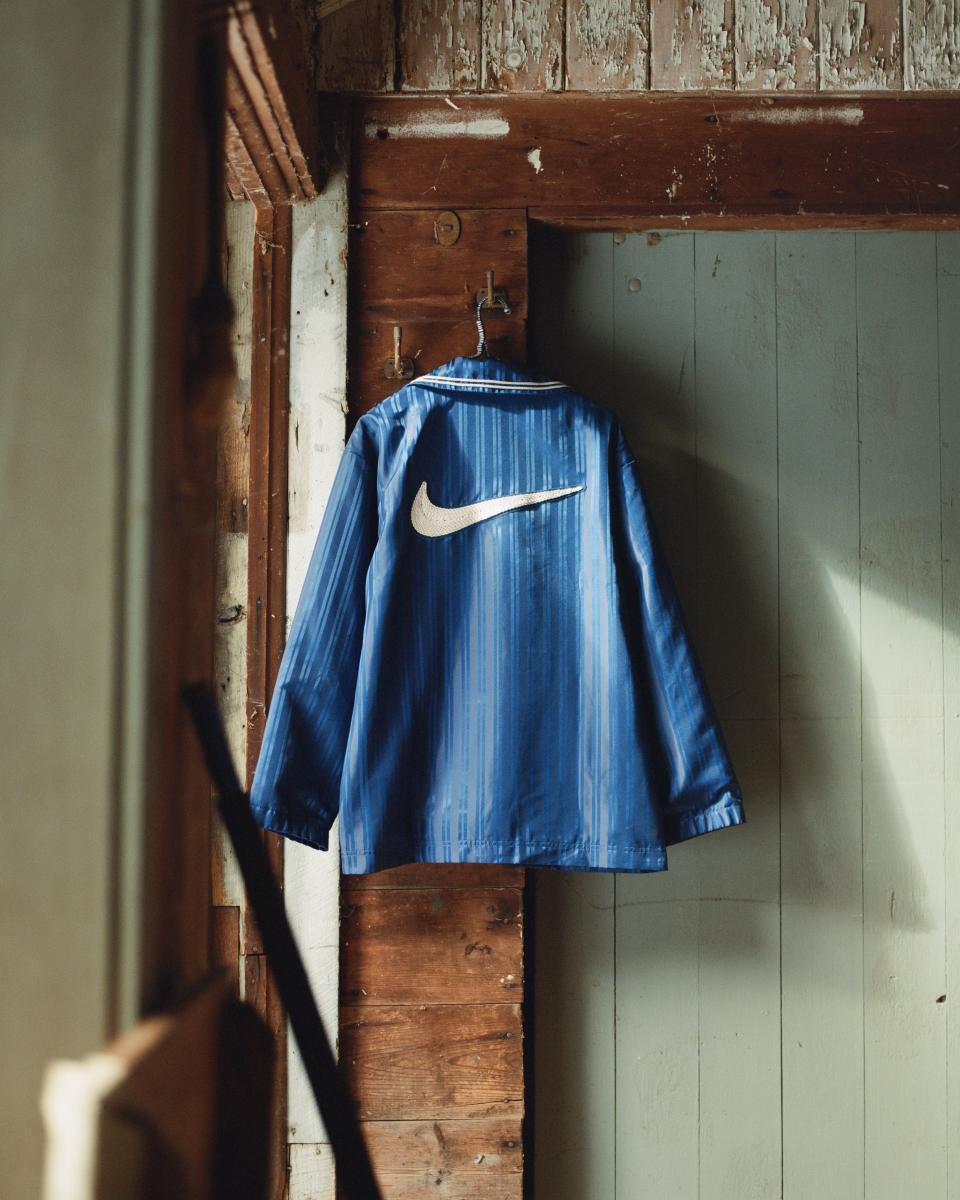
The collection will be available on April 18 on Bode.com, and will roll out to select Nike retailers and the SNKRS app in the weeks following. It’s already clear that Bode Aujla has a hit on her hands. But what did Nike Employee Number One think of the new kicks? When I spoke with Jeff Johnson, he had yet to see them. I was lucky enough to get my hands on an early pair of Bode Rec. x Nike Astro Grabbers in black leather, and held them up for him on Zoom.
“Oh, wow!” he exclaimed, before launching into a lengthy analysis of the sole profile and instep. “So that looks like our first football shoe with larger waffles, but they're bringing the two together,” he said. So, do you like it? I asked. “Oh, yeah!” he said. “It’s a great shoe.” Another step forward in a long, fascinating history.
Originally Appeared on GQ

